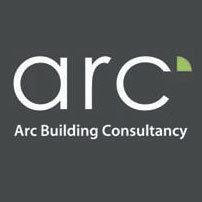Dilapidations in Commercial Property
As with all leased properties, commercial real estate normally requires the tenant to maintain the property in good condition and carry out any repairs needed during and upon lease expiry.
If the property is altered or damaged in any way, the landlord and tenant may also end up in a dispute over unfulfilled contract terms.
Read on to find out everything you need to know about how both the occupier and the landlord can prevent or deal with any dilapidations issues that arise.
What are dilapidations?
Dilapidations are all about a landlord’s loss following a tenancy coming to an end. This loss is often the disrepair or damages to a property during its occupation or at the end of a lease. They are linked to the tenant’s covenants under the lease to maintain the premises and return the property in repair.
Landlords typically have the right to make a dilapidations claim that typically includes the cost to repair, decorate, and remove tenant’s alterations. The tenant will have the opportunity to undertake these works during their tenancy, or if not, a cost/damages claim needs to be agreed.
A dilapidations claim can happen at any time during or at the end of a lease, making it essential to consider dilapidations before agreeing on a commercial lease.
What to consider before signing a commercial lease
When entering into a commercial lease agreement, it is essential to outline and comprehend the terms regarding dilapidations. Both tenant and landlord should negotiate a favourable deal to prevent future disputes.
Understanding a lease’s terms is instrumental in order to avoid unnecessarily paying for repairs or the loss of rent while the issues are being resolved. This will also help ensure both parties are comfortable when negotiating the lease and moving forward.
Schedule of condition
If the property is old, it is often not in repair at the start of a new lease, and it is crucial to inspect it to ascertain what state it’s in.
By requesting a schedule of condition from a building surveyor, tenants ensure that they are taking all the necessary steps to protect themselves in the future – but it must be referenced within the lease.
This document contains photos and a thorough description of the property’s condition when the lease is signed. It can be attached to the lease and limit the repair conditions, protecting landlords and tenants from having to argue what condition the property needs to be returned in.
Anticipated Dilapidations Report
An anticipated dilapidations report can fulfil a number of functions. During the term of the tenancy, it will assist with understanding the dilapidations that have occurred. This may help a tenant with planning and cash flow, or a landlord so that they can actively manage the building. It can also enable a business to mitigate their risks and future expenditure if they are buying another business, protecting them from future liabilities. There are also tax benefits, as anticipated dilapidations reports can help pre-plan taxes under an FRS 102 with HMRC.
By carrying out anticipated dilapidations reports before a commercial lease ends, tenants can reduce the likeliness of landlords charging them for additional repairs before the end of the tenancy.
Understanding the state of your rented property is also crucial in giving the tenant enough time to make any changes needed to the property to follow the dilapidations agreements set in the contract.
Before carrying out work on a commercial property
Before making any alterations or modifications to the property during the tenancy, the tenant should carefully consider the circumstances at hand.
Under the terms of some leases, modifying the property externally or internally without the landlord’s approval is not allowed. Some leases will require the tenant to return the property to its original state, even if previous alterations are approved.
Any alterations can still be included as part of a dilapidations claim if the lease states it, even if these had intended to add value to a property.
Schedule of dilapidations
Landlords can make a dilapidations claim against the tenant at any time if they believe the terms of the lease have not been followed.
Utilising a building surveyor to review the terms and advise on dilapidations can save time and money for both landlords and tenants.
As with all commercial property law, it is a must to get advice from experts to expertly manage these situations – especially if a tenant intends to negotiate or respond to claims.
How can we help?
At Arc, we are committed to offering the best advice possible to tenants and landlords looking for help on commercial real estate problems.
Our dedicated team of experts will deliver accurate and helpful information to help you understand commercial property issues while assessing any liabilities you may have.
To receive professional help from a team of chartered building surveyors, get in touch with us today!


